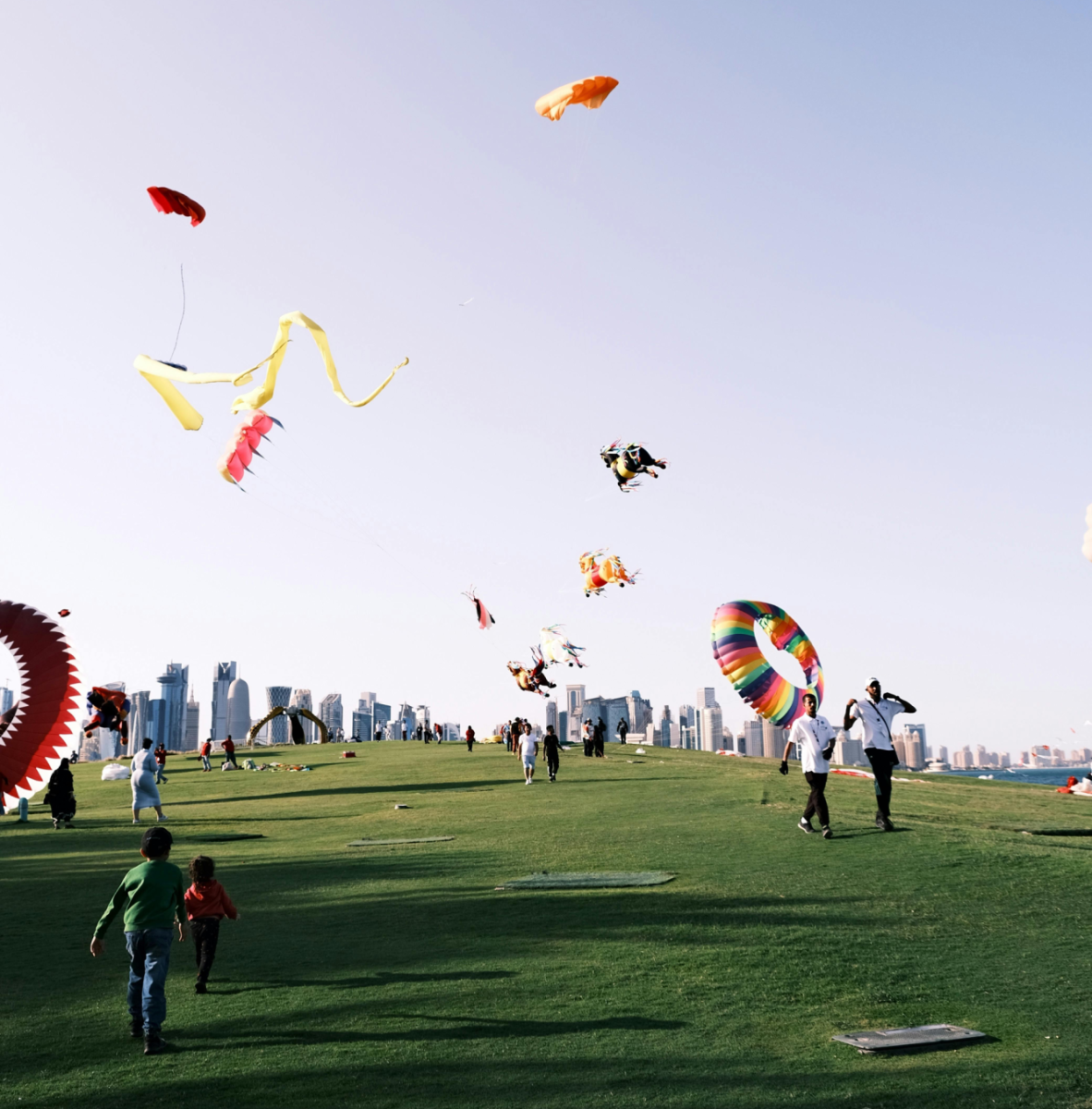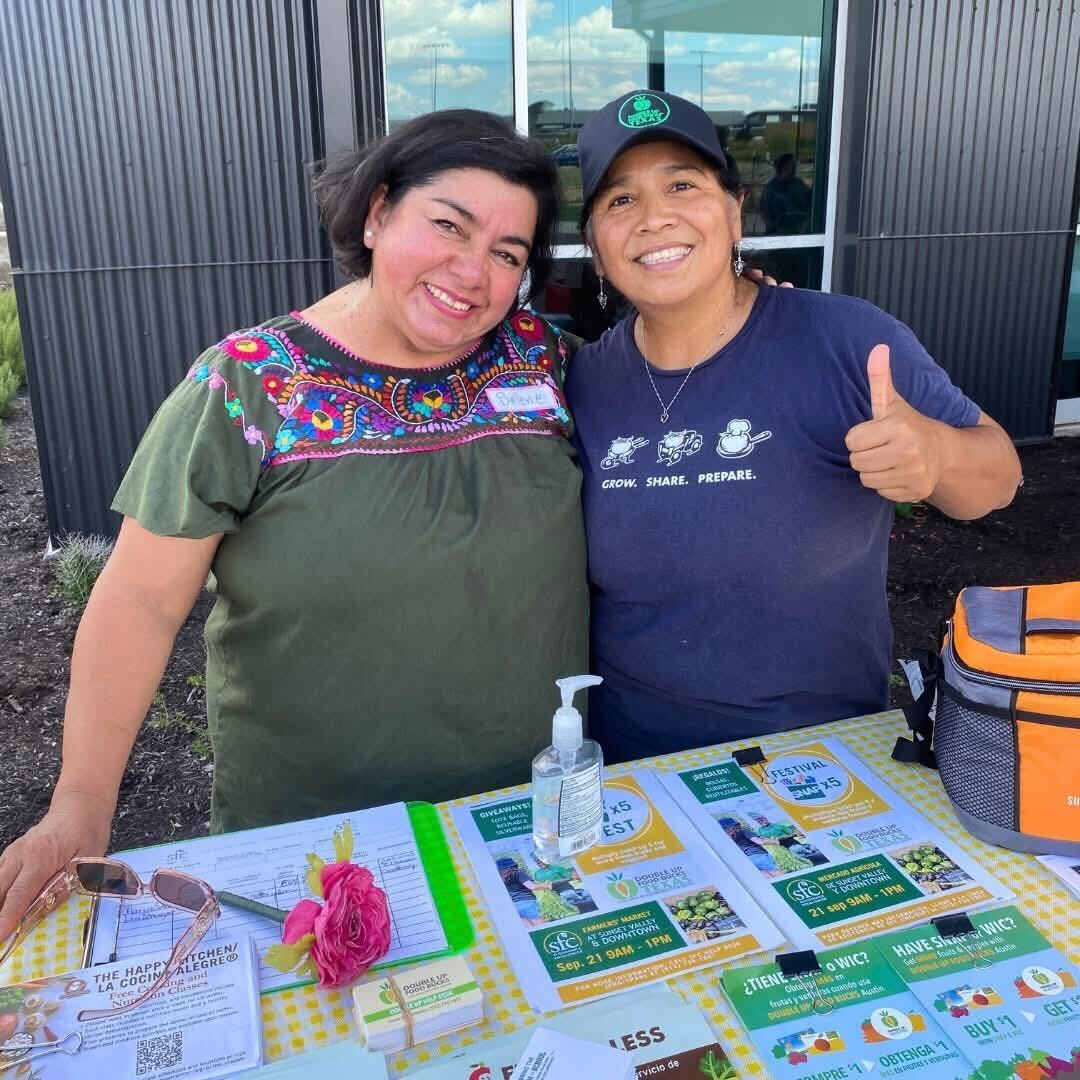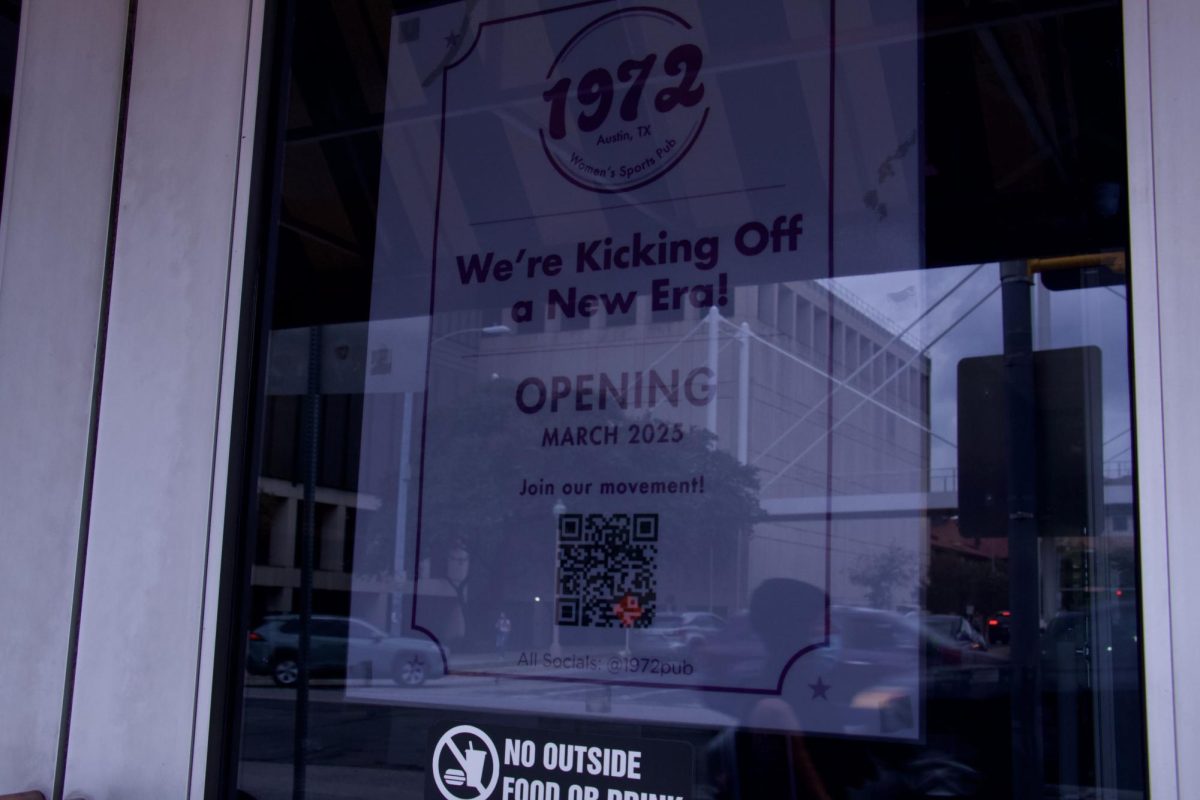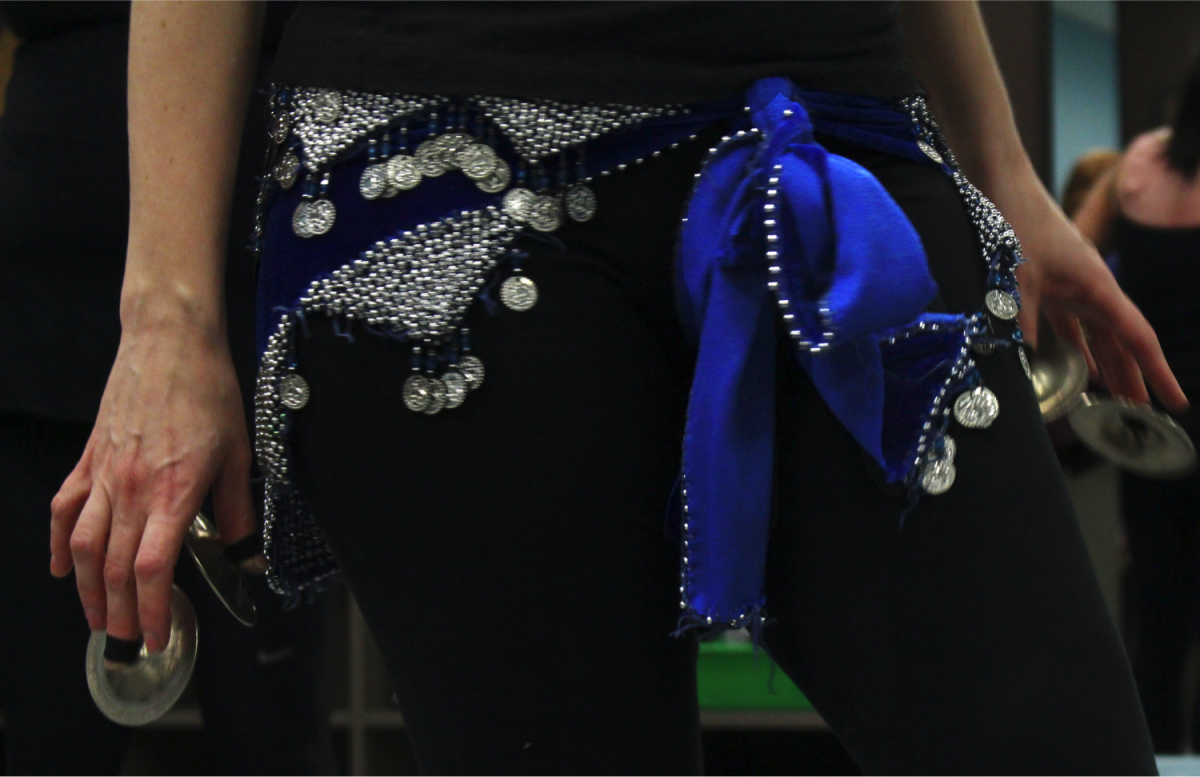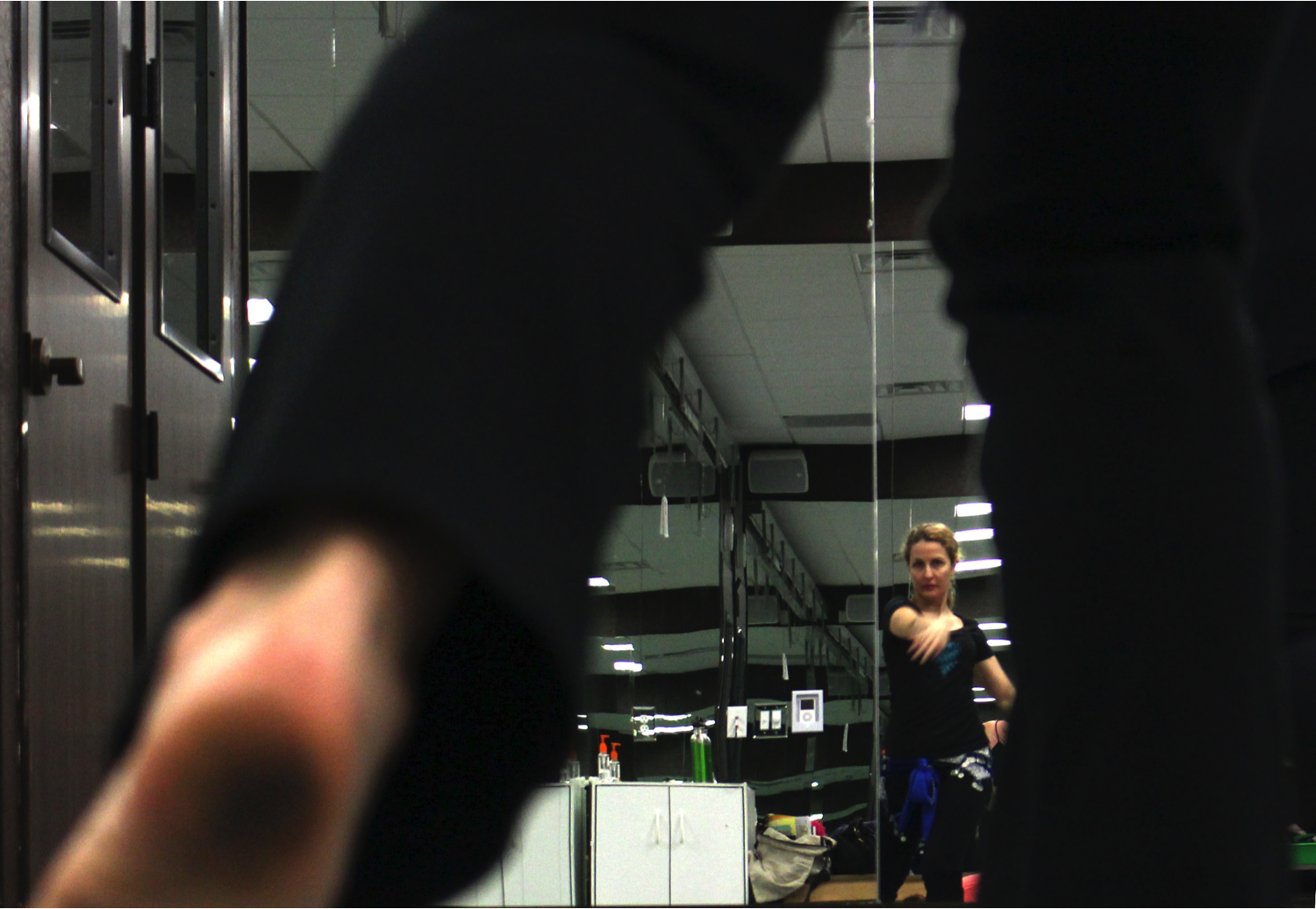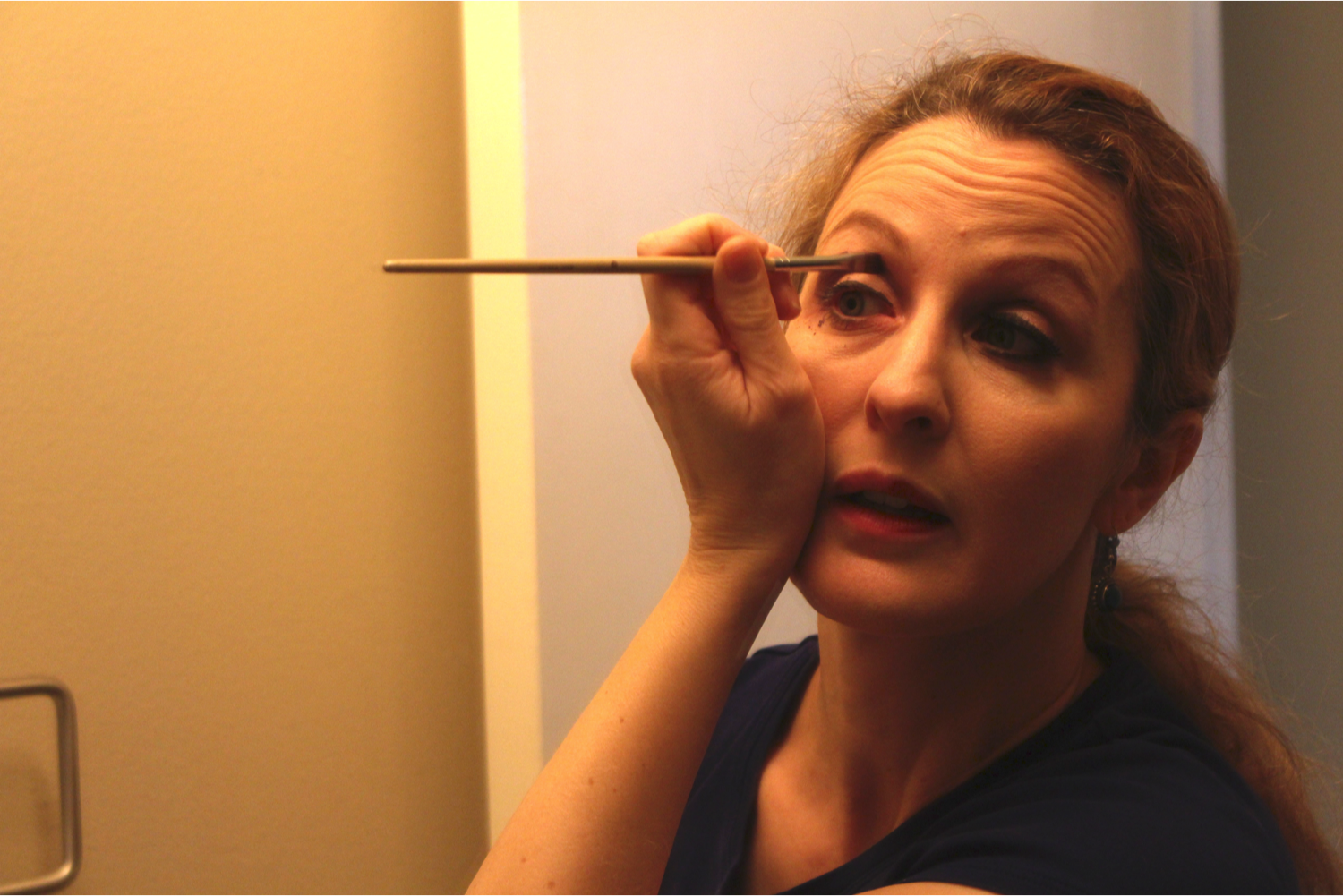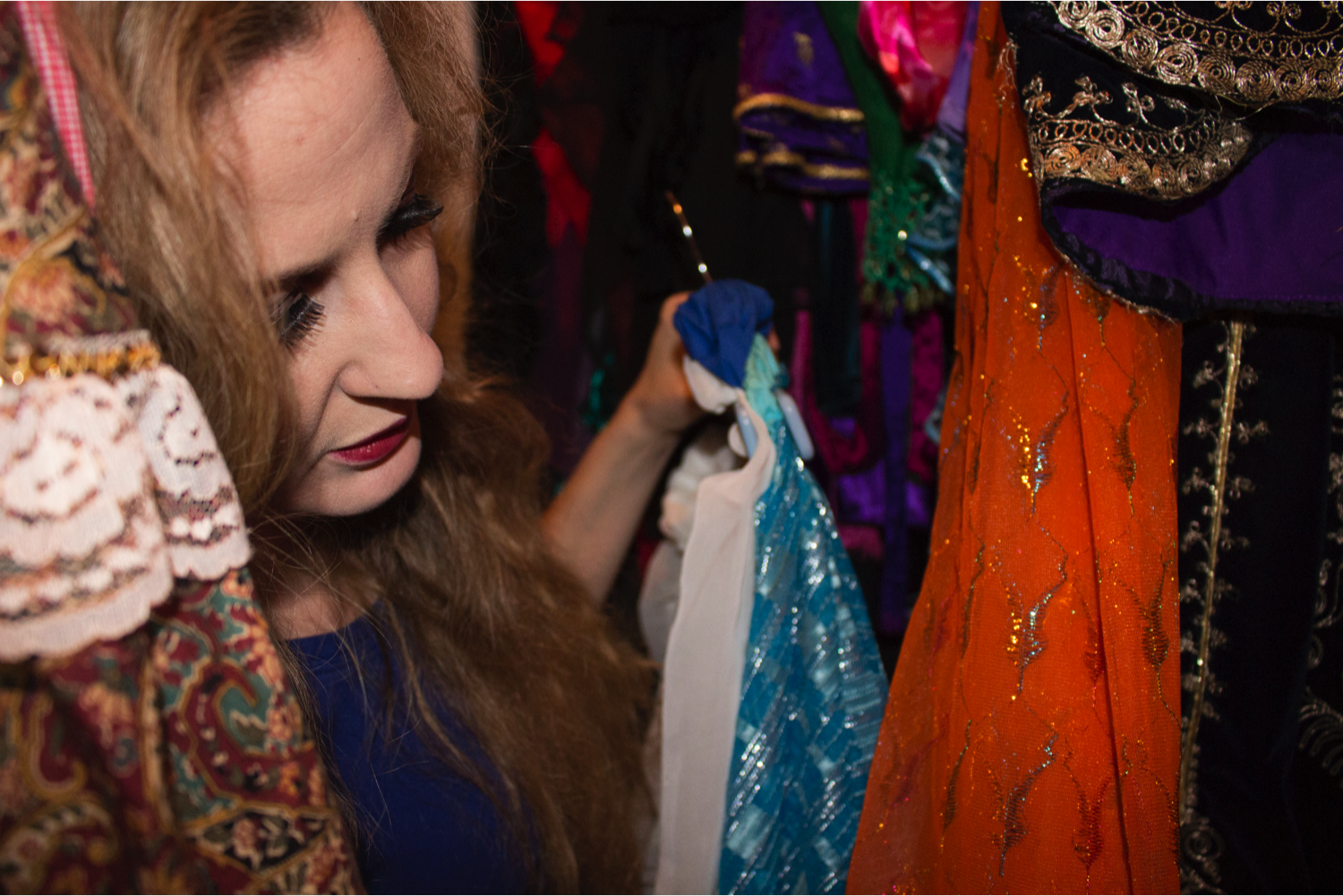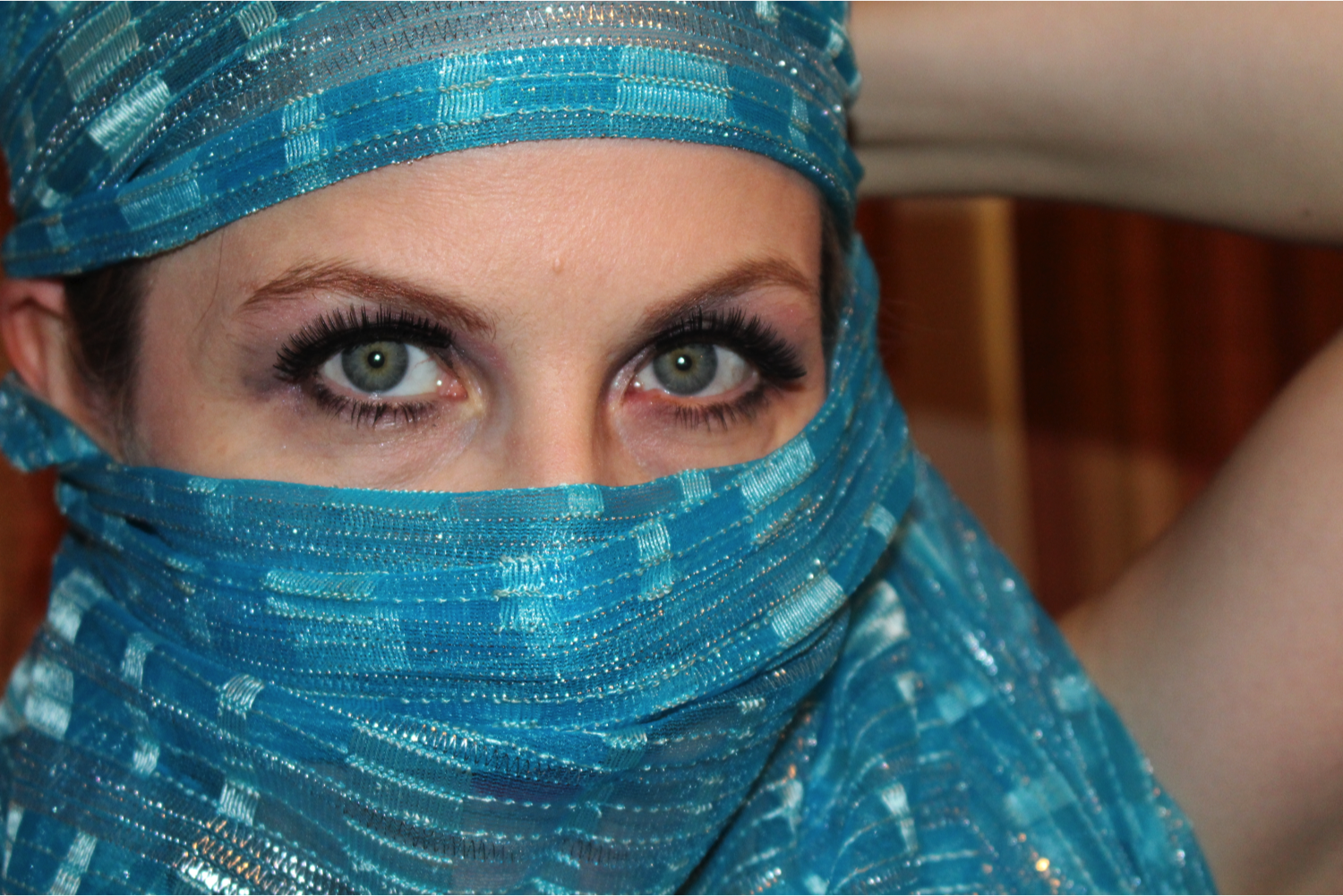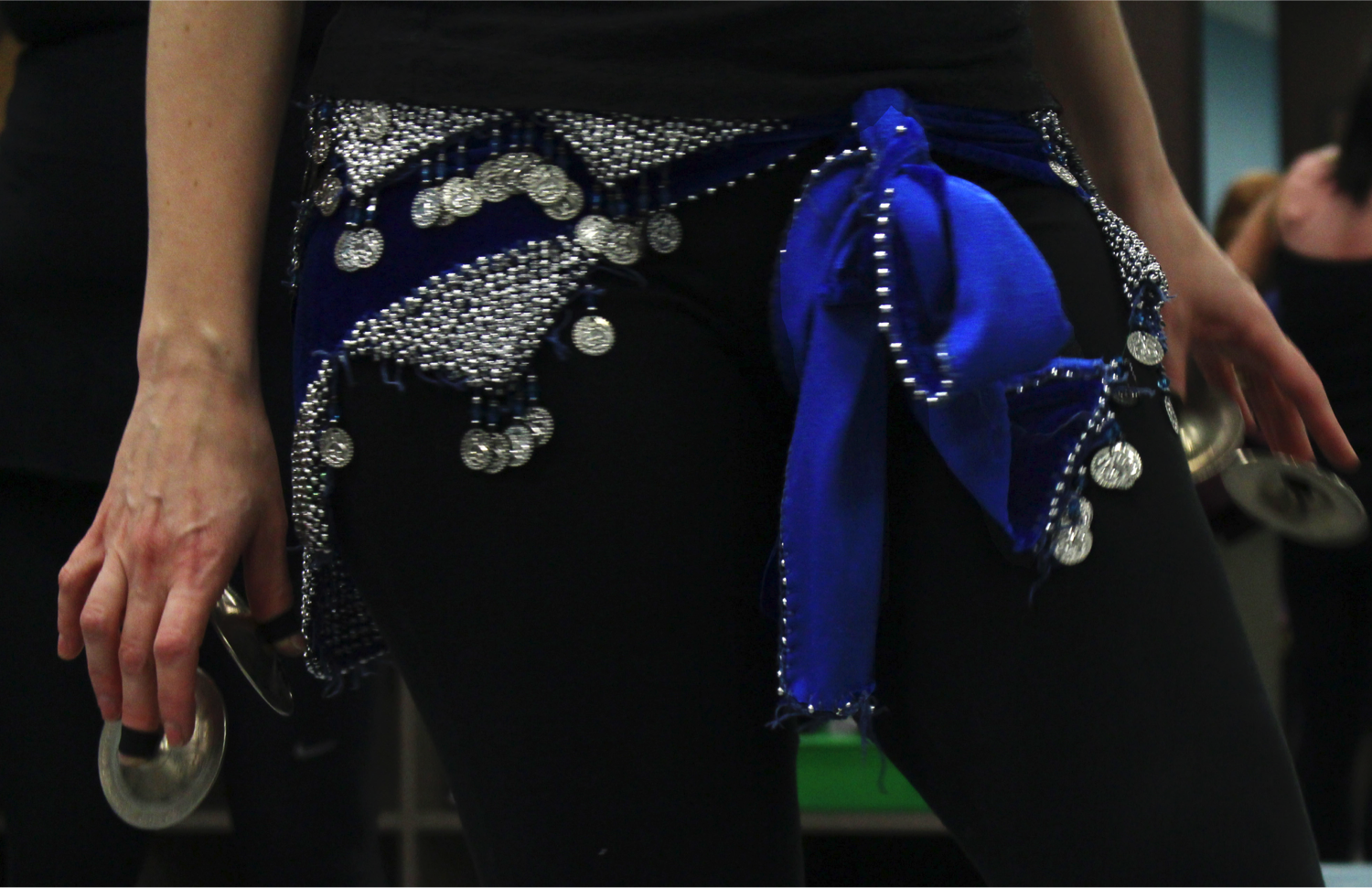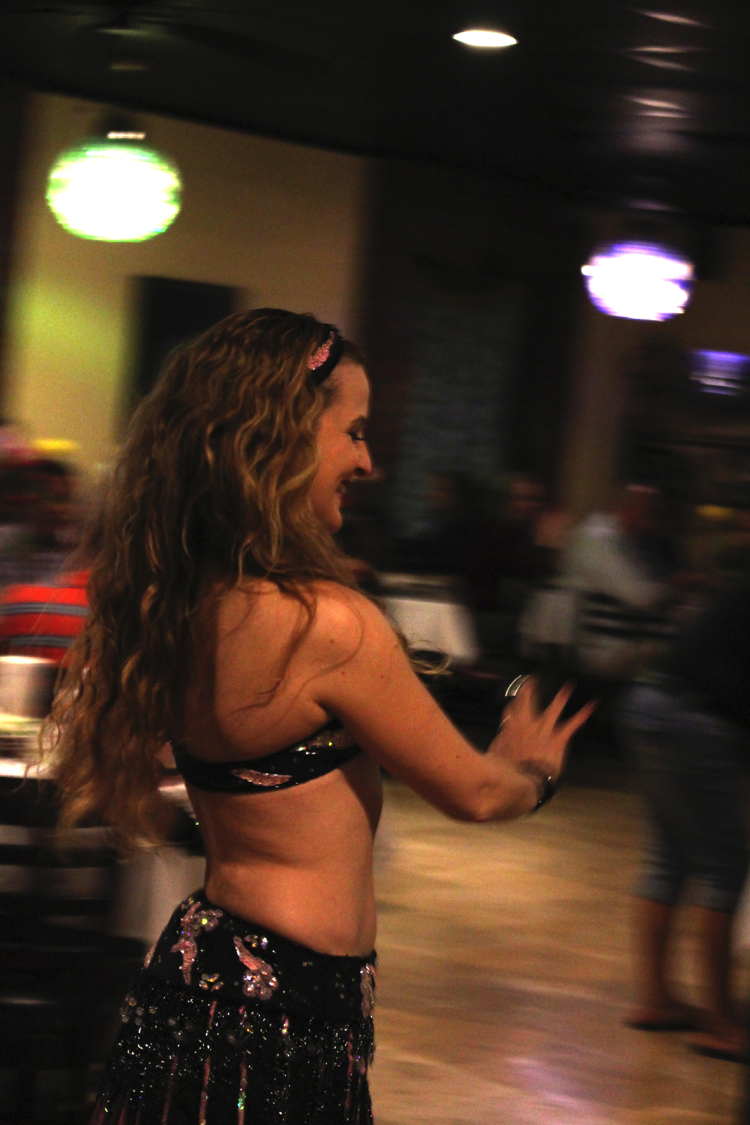Amara warms up with stretches before teaching a belly dancing class.
By Selah Maya Zighelboim
She chose the stage name Amara because of her complexion. Amara is a belly dancer with pale skin, blond hair and blue eyes. According to her, Amara means beautiful moon. “I felt like, with my pale skin, I was kind of along the line of moon-like,” she says.
Amara says being a white dancer specializing in a Middle Eastern dance form can be both helpful and a hindrance. She used to do auditions in Hollywood but stopped because casting directors tended to prefer belly dancers with darker complexions. At the same time, she also knows that she sometimes gets hired as the white girl. “It’s a status symbol in some ways to hire the foreigner,” she says.
Amara applies eye shadow in her personal studio’s bathroom.
Amara faces a lot of social stigmas pursuing belly dancing. Non-Middle Eastern audiences will often engage in what Amara calls “hyper-feminization,” an oversexualization of belly dancing. “I get a lot of sympathy looks, like, ‘Oh, that poor person has to dance for a living,” she says. “Or that I’m some sort of loose woman, who’s just shaking it.”
Amara peruses through her dance outfits in her costume closet.
A belly dancer based in Austin, Texas, Amara teaches several dance classes a week and does regular local performance.
Sometimes Amara will get hired for jobs as a form of embarrassment. Once she had been hired for a grandfather’s birthday. “I got there, and the grandpa locked himself in the bathroom,” she says. “He was mad, not only because they were throwing him a birthday party, but they had hired a belly dancer.”
Middle Easterners, on the other hand, hire her to entertain and because they know who she is. Amara says she used to entertain at a lot of women’s parties. “I’d go and do an hour show,” she says. “They’d watch me dance for a little, but then they’d get up and want to dance with me, and they would learn the moves by watching me.”
During performances, Amara uses various props, such as veils, swords and, in this dance, finger cymbals.
Two Fridays a month, at Alborz Persian Cuisine, Amara belly dances for an audience of restaurant goers.
Nowadays Amara mostly does local performances at places like the Alborz Persian Restaurant two Fridays a month, and teaches several weekly belly dancing classes. She has a Ph.D in dance history and theory and sometimes thinks about returning to the world of academia. In order to do that Amara says she would need to leave the South and move somewhere more liberal. “They’re too conservative here,” she says. “They’re not looking for me. They’re not looking for Middle Eastern dance. They’re mainly ballet and a certain type of contemporary dance.”




